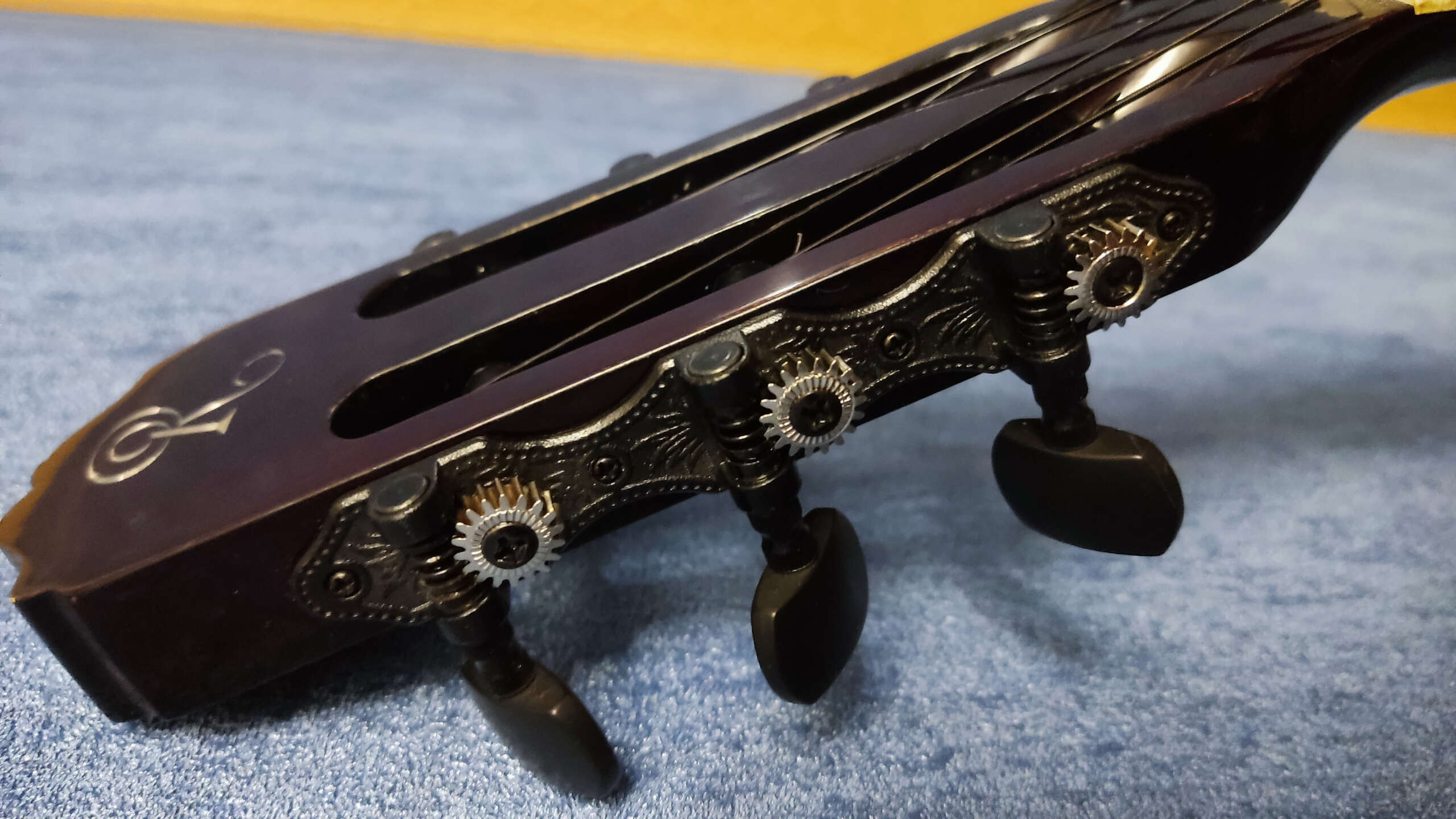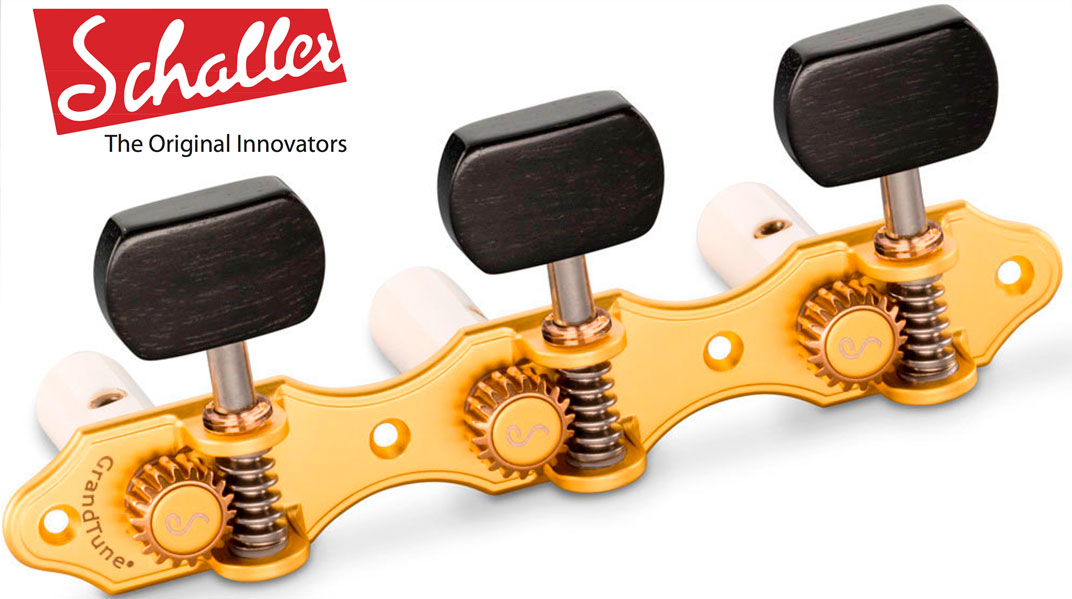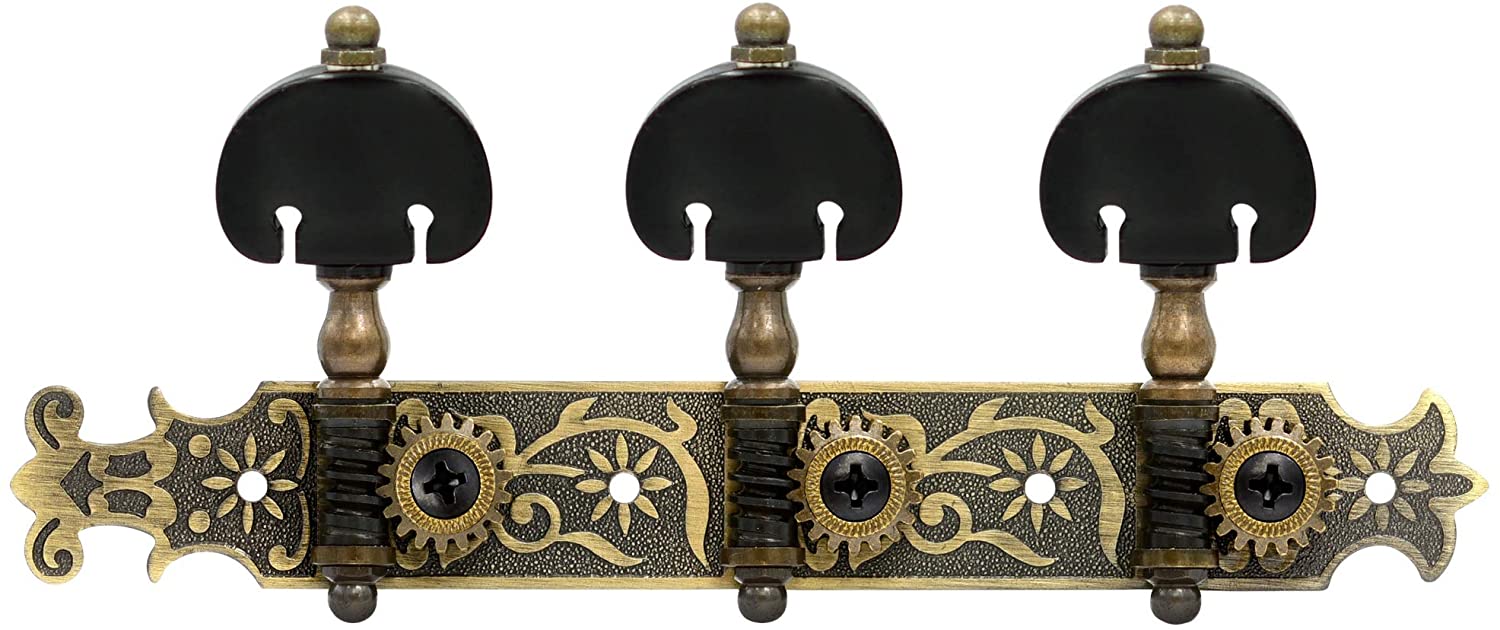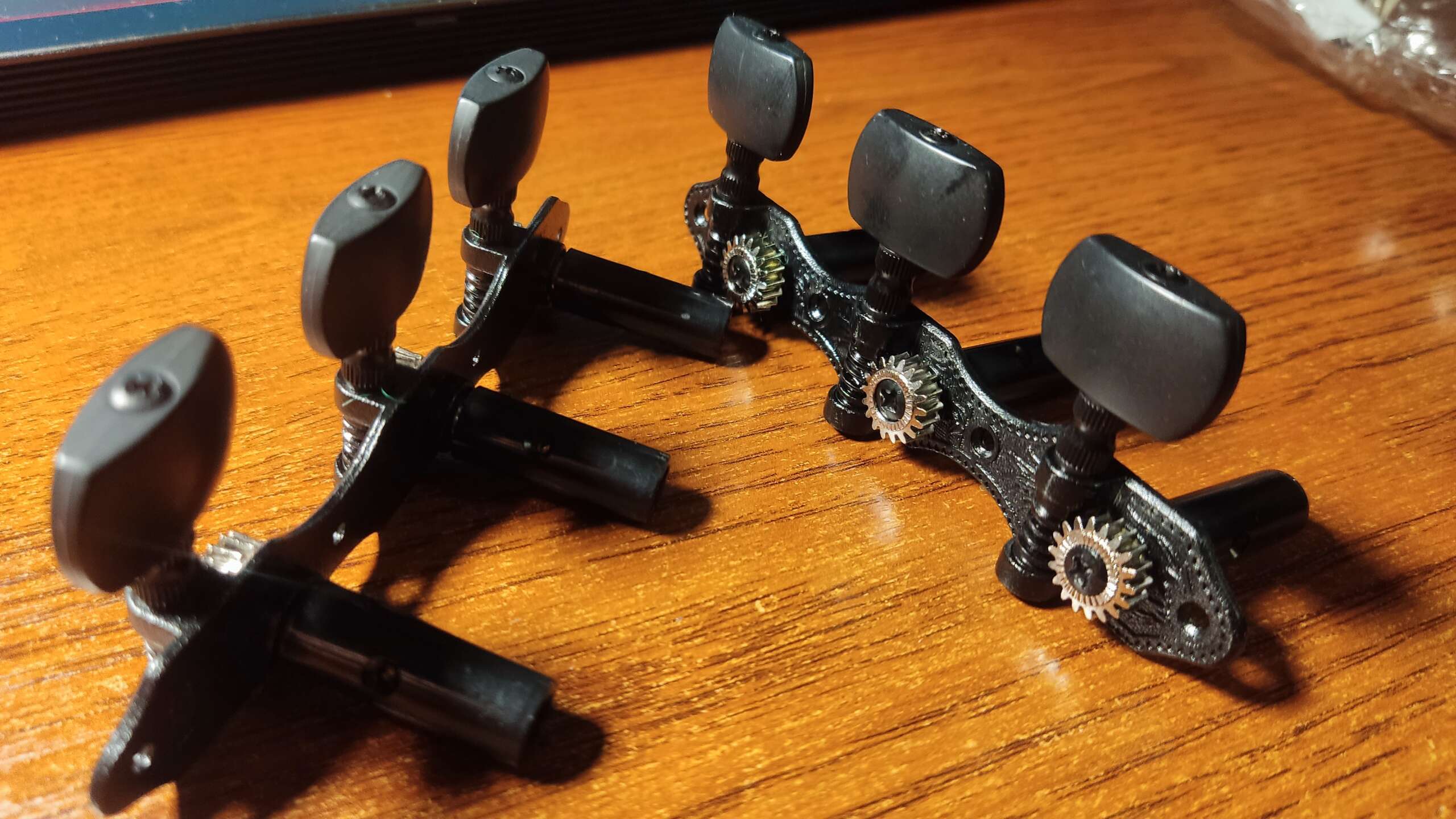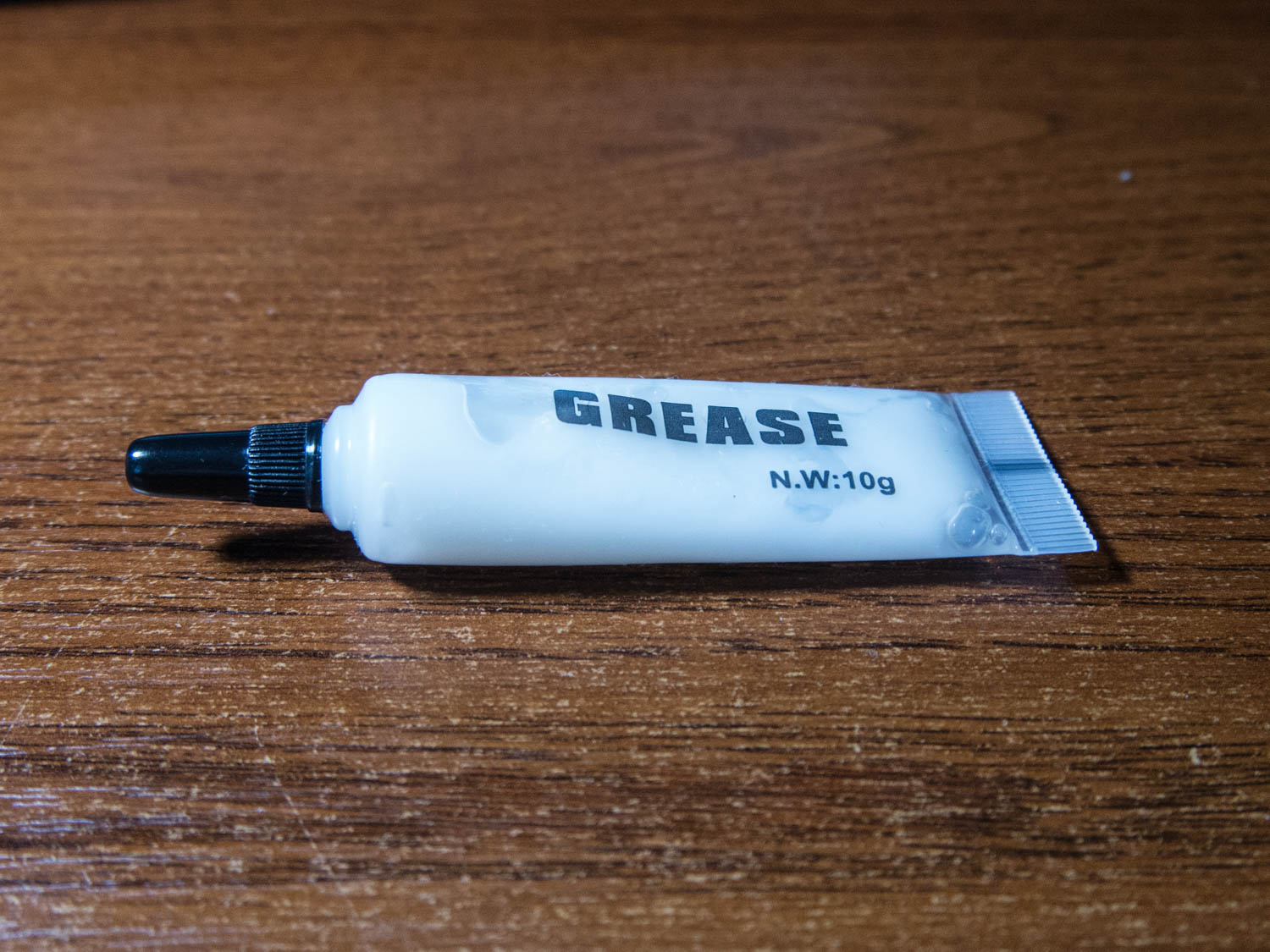Guitar tuning pegs: why change them?
Expensive guitars are equipped with good tuning pegs. Of course, there are exceptions, but in most cases manufacturers put the cheapest hardware on budget instruments. So if you are a happy owner of a budget guitar that sounds decent, you will have to change the tuning pegs, even if you are satisfied with them. Because cheap tuning pegs wear out, and sooner or later you will get tired of spending half an hour turning the knobs, trying to catch that elusive position when the guitar starts to tune.
Once, a very dear person gave me a nice Rollins guitar with a good sound. I love this instrument, so I brought the guitar to the most comfortable playing condition: the frets were leveled and polished, I bought natural bone from which I personally carved beautiful bridge pins, adjusted the string height (and installed black Pro-Arte strings), but I didn't get to the tuning pegs. And then the tuning peg on the first string got stuck, the plastic cap cracked, and I faced a difficult choice.
What types of tuners are available for classical guitar
The standard for classical guitar is considered to be a 3+3 guitar machine head (three right and three left pegs on one plate). The shaft diameter should be 9-10 mm, and the distance between the first and third shaft should be 70 mm. The classical gear ratio is 1:14, and the main part of the pegs and other accessories for inexpensive guitars are produced by the Chinese company Guangzhou Romance Musical Instruments Co., Ltd. under the brand Alice. In fact, pegs of this brand were on my guitar, so it was immediately excluded from the choice.
So, what were my requirements for pegs:
- Quality. These should be reliable and well-made pegs with smooth operation.
- Gear ratio of 1:18 or less. The higher the gear ratio, the more difficult it is to tune the guitar. If I'm changing pegs, let the new ones have a low gear ratio.
- Repairability, namely the ability to change the peg caps. Actually, if the original pegs on my guitar allowed for such a possibility, I would have just changed the caps, lubricated the shafts, and used the guitar for another ten years.
I could have bought Gotoh, Schaller, Grover, or Kluson pegs at the nearest store, but in this case, the pegs would have cost an amount comparable to the price of the guitar, and I planned to spend about five times less.
What pegs did I choose for the guitar?
What pegs did I choose for the guitar?
At first, I found regular 1:14 pegs for five dollars. The only advantage they had over the original pegs were replaceable caps, so I kept looking.
Then I noticed pegs from the Taiwanese company DERJUNG ENTERPRISE. They look fantastic, with a gear ratio of 1:18 and a suitable price. There aren't many reviews on Aliexpress, but these pegs are widely sold on Amazon, where they have a decent rating.
I had already decided on those DERJUNG pegs, although they looked a bit fancy, and I was ready to buy them. But then I came across pegs from another manufacturer, KD Rising Guitar, which has its own production and big ambitions, but was only established in 2014 and hasn't become well-known yet. I liked the simplicity of their pegs, so I immediately ordered them from here. After three weeks, the pegs arrived. They were beautiful!
What do you need to change the pegs on a classical guitar?
What do you need to change the pegs on a classical guitar?
Let's go in order. To replace the tuning pegs, we will need a PH1 cross screwdriver and a drill with a 1.5-1.7 mm drill bit. Screws for installing the mechanics come in the set, and the drill will be needed to drill holes for them. For example, in my case, only one of the four holes for fixing the tuning pegs matched the old ones. Of course, you can mark the holes with a needle, but in this case, there is a great risk of stripping the slots on the screws.
We will also need lubricant since the shafts of the tuning mechanism, pressed against the walls of the holes, will experience very strong friction when the string is tightened. To reduce it, we need lubricant. The use of any kind of machine industrial and household lubricants for lubricating tuning pegs is generally prohibited because they are absorbed into the wood, causing the wood to swell and jam the shaft (which is precisely what we want to avoid). Of course, you can buy a special guitar lubricant, but it has a liquid consistency and is recommended "for lubricating all guitar parts"; in the promotional video, it is used to lubricate tuning pegs, frets, tremolo springs, and everything else. But we are engineers and understand that there are no universal lubricants, so it will not work properly in any part. So let's put aside the money we've set aside for special lubricant and instead buy a chemically neutral silicone-PTFE lubricant on AliExpress for a dollar. It is used to lubricate gears, bushings, bearings, and other loaded, rubbing, and moving parts of printers and coffee machines. Therefore, this lubricant is perfect for lubricating the holes in which the shafts of the tuning mechanism rotate, as well as for lubricating the worm gear.
The new tuners rotate smoothly and evenly, and tuning the guitar has ceased to be a torture, I now love my instrument even more.
I wish you clean notes, weak beats, and sustain on bends.

